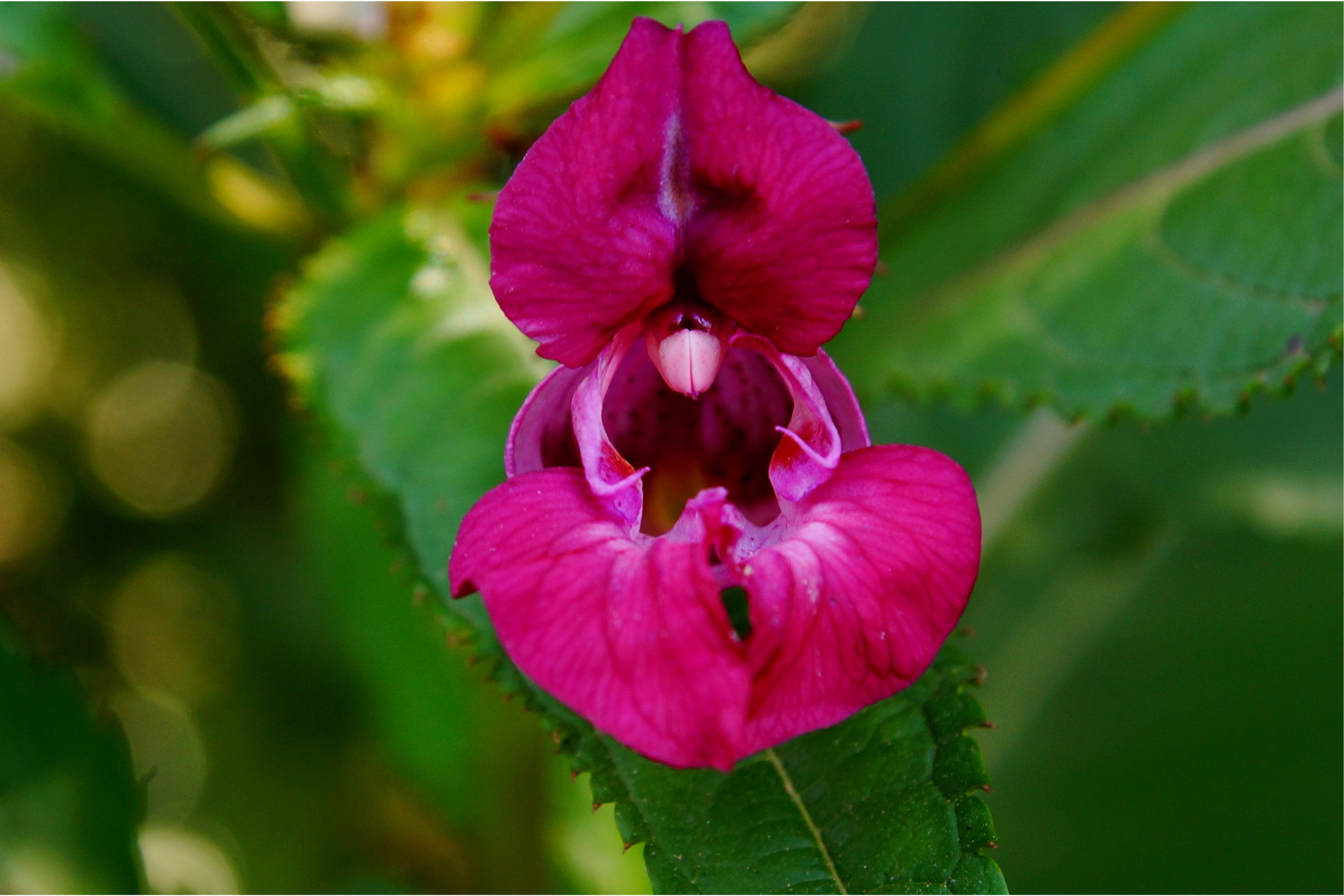Touch-Me-Not
(Impatiens balsamina)

Description
Impatiens balsamina is a species of flowering plant in the family Balsaminaceae. It is commonly known as the Garden Balsam, Rose Balsam, Touch-Me-Not, and Lady Slipper. This plant is native to India, China, and Southeast Asia, and it has been widely cultivated as an ornamental plant all around the world. Taxonomy and Nomenclature: Impatiens balsamina was first described by Carl Linnaeus in his book "Species Plantarum" in 1753. The genus name "Impatiens" comes from the Latin word "impatientia," which means "impatience," referring to the explosive dehiscence of the fruit capsules. The species epithet "balsamina" comes from the Latin word "balsamum," which means "balsam," referring to the resinous sap of the plant. Description: Impatiens balsamina is an annual plant that grows up to 60 cm (2 feet) tall. The stem is erect, succulent, and branched. The leaves are alternate, ovate or elliptic, serrated, and up to 8 cm (3 inches) long. The flowers are solitary, axillary, and bisexual, with a spur at the base of the corolla. The corolla is composed of five petals that are pink, purple, red, white, or bicolor, and have a dark spot at the base. The fruit is a capsule that explodes when ripe, dispersing the seeds in all directions. Distribution and Habitat: Impatiens balsamina is native to India, China, and Southeast Asia, but it has been widely cultivated as an ornamental plant all around the world. It grows best in tropical and subtropical regions, where the temperature ranges from 20 to 30°C (68 to 86°F) and the annual rainfall is between 1000 to 2000 mm (39 to 79 inches). It prefers well-drained soil that is rich in organic matter and slightly acidic (pH 5.5 to 6.5). Cultivation and Propagation: Impatiens balsamina is a popular ornamental plant that is grown for its showy flowers and easy care. It can be grown from seeds or cuttings, and it prefers a bright but not direct sunlight, as it can tolerate some shade. It needs regular watering and fertilization during the growing season, but it should not be overwatered, as it can lead to root rot. Impatiens balsamina is susceptible to aphids, spider mites, and whiteflies, which can be controlled with insecticidal soap or neem oil. It can also be affected by fungal diseases such as powdery mildew and downy mildew, which can be prevented by providing good air circulation and avoiding overhead watering. Uses and Benefits: Impatiens balsamina is mainly grown as an ornamental plant in gardens, parks, and containers. It is suitable for borders, bedding, and hanging baskets, and it can be combined with other plants such as ferns, coleus, and begonias. It is also used in traditional medicine in some Asian countries, where the leaves and flowers are boiled to make a tea that is believed to have anti-inflammatory, analgesic, and diuretic properties. Conclusion: Impatiens balsamina is a beautiful and easy-to-grow plant that is widely appreciated for its showy flowers and versatility in garden design. It has a long history of cultivation and traditional use in some Asian countries, and it continues to be a popular choice for gardeners and horticulturists around the world.
Taxonomic tree:







